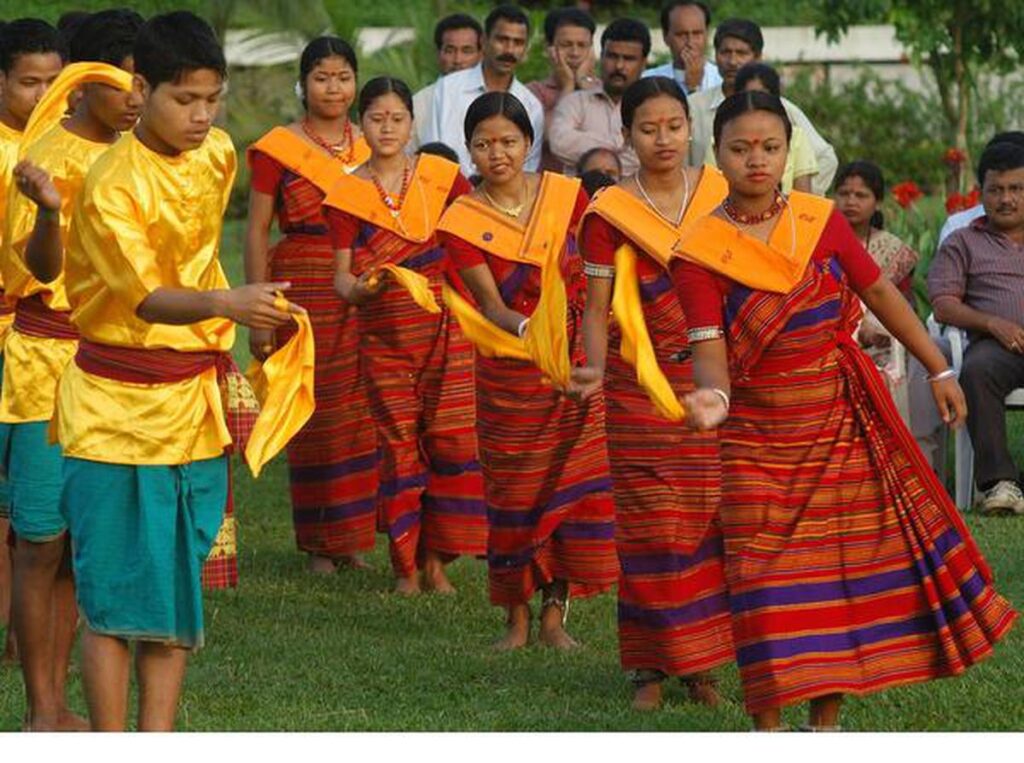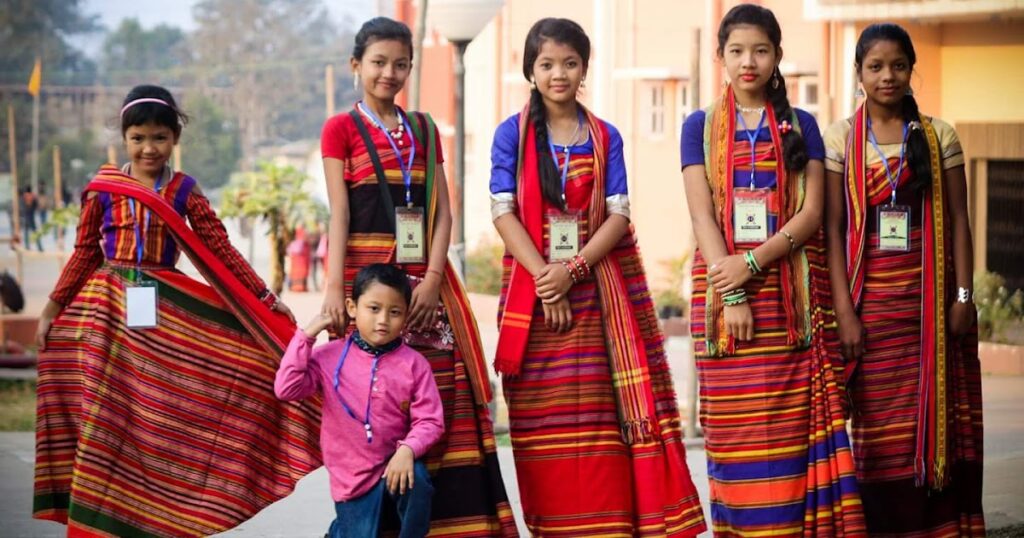The Least Known ‘Hajong Tribe’ of Northeast India
The Hajong tribe is a significant indigenous community in Northeast India, primarily found in parts of Meghalaya, Assam, and West Bengal. Though they are spread across these regions, the majority of the Hajong people are concentrated in the Garo Hills of Meghalaya, a region that is home to various indigenous tribes, including the Garos, Khasis, and Jaintias. The Hajong tribe has a distinct ethnic identity, language, culture, and history, which make them an integral part of the tribal diversity in the northeastern part of India.

Origin and History of the Hajong Tribe
The Hajongs are believed to have originated from the Chittagong Hill Tracts, which now lie in present-day Bangladesh. Over the centuries, the tribe migrated eastward and settled in various regions of Northeast India. Their migration is generally linked to the movement of Tibeto-Burman-speaking people in the region. While the exact time of their migration is not documented, oral traditions suggest that they arrived in the region several centuries ago, interacting with various other indigenous communities along the way.
Historically, the Hajong people were part of a larger group of ethnic communities who had settled in the borderlands of the Indian subcontinent. They maintained strong connections with other Tibeto-Burman tribes and have a similar lifestyle and culture to other ethnic groups in the region.

Language
The Hajongs speak the Hajong language, which belongs to the Indo-Aryan language family. The language shares similarities with other languages in the region and is part of the broader linguistic landscape of Northeast India. It is classified as an endangered language because the younger generation of Hajongs is increasingly adopting Assamese, Khasi, or Bengali in daily communication, which has caused the language to decline in use.
In addition to the Hajong language, many members of the tribe are multilingual, often speaking Assamese, Bengali, and Khasi. Assamese is widely spoken in the Assam region, while Khasi and Garo are dominant in Meghalaya, reflecting the region’s linguistic diversity.
Cultural Traditions and Practices
The culture of the Hajong tribe is deeply rooted in animism, which forms the core of their traditional religious beliefs. Animism involves the worship of natural elements such as rivers, trees, and animals, as well as the veneration of spirits believed to inhabit these elements. The Hajongs believe in the presence of supernatural forces that influence their lives, and they conduct various rituals and ceremonies to appease these spirits and seek blessings for good health, fertility, and prosperity.

Like many other indigenous communities in Northeast India, the Hajongs have elaborate rituals associated with important life events such as birth, marriage, and death. These rites are overseen by spiritual leaders or shamans who act as intermediaries between the physical and spiritual worlds. They also celebrate festivals tied to agricultural cycles and the changing seasons, thanking the deities for bountiful harvests and seeking protection from natural calamities.
With the passage of time, a significant portion of the Hajong tribe has converted to Christianity, particularly Protestant Christianity, which has influenced their religious practices. The spread of Christianity in the region began during the British colonial period and accelerated in the 20th century. Churches play an important role in the social life of Hajong communities, and Christian holidays like Christmas and Easter are widely celebrated, though many traditional animistic practices persist alongside the newer religious beliefs.
Socio-Economic Life and Livelihood
Agriculture remains the primary occupation of the Hajong people, with rice being the staple crop. The region’s hilly terrain and climatic conditions make agriculture an essential aspect of life for the tribe. They practice subsistence farming, growing rice, vegetables, and fruits, and often engage in shifting cultivation, a traditional farming technique. In addition to farming, the Hajongs also engage in animal husbandry, raising cattle, goats, and poultry.

Despite their agricultural expertise, the Hajong community faces economic challenges. The terrain of the Garo Hills and surrounding areas is often difficult to navigate, and access to modern amenities, markets, and infrastructure remains limited. This isolation contributes to lower levels of education, healthcare, and economic development in the community.
Social Structure and Governance
The Hajong tribe follows a patriarchal social structure, where elder males typically hold authority within families and communities. The community is often governed by a village council or a council of elders, which plays a vital role in resolving disputes and making important decisions. This traditional form of governance is deeply tied to their customs and is a significant aspect of their social organization.

However, the traditional social structure is undergoing change, particularly in urbanized areas, as younger generations seek better opportunities in education, employment, and social mobility. The younger Hajongs are increasingly moving to towns and cities for work and educational opportunities, which has led to changes in the traditional family dynamics and social systems.
Challenges
Like many indigenous communities in Northeast India, the Hajongs face a variety of challenges, especially in terms of land rights, education, and healthcare. Land disputes are common, and access to land and resources can be a source of tension, particularly with increasing urbanization and the encroachment of outside communities.
Educational attainment remains a significant challenge, as the region’s infrastructure for education is underdeveloped. Many Hajongs continue to rely on community-based schooling or education in rural areas, where resources are scarce, and the quality of education is often subpar. Additionally, healthcare facilities are inadequate in many remote areas where the Hajongs reside, leading to poor health outcomes for the community.

The political situation in the Northeast also affects the Hajong tribe. The region has experienced ethnic tensions and insurgencies over the years, which has created a sense of insecurity and instability for tribal communities. The presence of external influences and government policies has often led to a complex relationship between the Hajongs and the state.
Conclusion
The Hajong tribe, with its unique language, rich cultural heritage, and resilient traditions, is an important part of the diverse tribal fabric of Northeast India. Despite facing socio-economic challenges, the community continues to preserve its cultural identity and way of life while navigating the complexities of modernization. Efforts to address issues like education, healthcare, and economic development are essential to ensure that the Hajongs, along with other indigenous communities, thrive in the evolving socio-political landscape of the region.






























